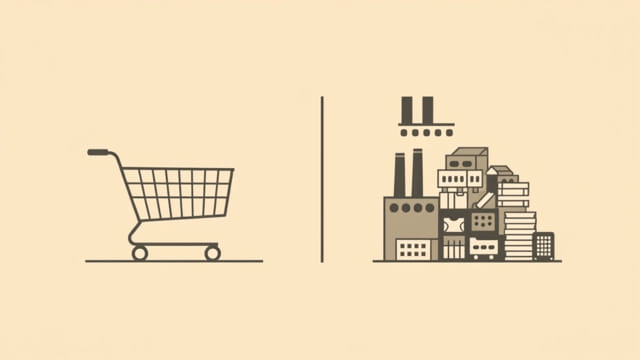Underconsumption And Overproduction Great Depression
The Great Depression, one of the most severe economic downturns in modern history, was caused by a complex mixture of factors. Among the key contributors to this crisis were the economic phenomena known as underconsumption and overproduction. These two interconnected issues created a vicious cycle that crippled the economy, leading to widespread unemployment, poverty, and social unrest. Understanding the roles of underconsumption and overproduction helps clarify why the economy spiraled downward and why recovery took so long after the stock market crash of 1929.
Understanding Underconsumption
Underconsumption refers to a situation where consumers do not buy enough goods and services to keep the economy functioning at full capacity. When people spend less than what is necessary to purchase the products produced, businesses face declining sales. This leads to a reduction in production, layoffs, and falling wages, which further decreases consumers’ purchasing power. The cycle deepens, creating economic stagnation.
Causes of Underconsumption in the 1920s
- Income inequality: A large portion of wealth was concentrated in the hands of a few, limiting the overall consumer spending power.
- Stagnant wages: Despite economic growth, many workers’ wages did not increase proportionally, reducing their ability to purchase goods.
- Debt burdens: Many consumers were already in debt from credit purchases, limiting further spending.
Underconsumption created an imbalance between production and demand. Even though factories were capable of producing vast amounts of goods, there was not enough consumer demand to buy them, which foreshadowed trouble ahead.
The Problem of Overproduction
Overproduction happens when industries manufacture more goods than the market can absorb. When supply exceeds demand, businesses face surplus inventories. To manage this surplus, companies often reduce prices, which can hurt profit margins and force cutbacks in production and employment.
Overproduction During the Great Depression Era
- Technological advances: Innovations and improved machinery increased factory output drastically.
- Increased agricultural production: Farmers, encouraged by higher crop prices during World War I, expanded production, leading to surpluses.
- Mass production methods: Assembly line techniques enabled companies to produce goods faster and cheaper, but without matching growth in consumer purchasing power.
Overproduction resulted in a glut of products in the market, driving prices down and reducing profits. Many companies faced financial difficulties, which led to layoffs and factory closures, exacerbating the economic downturn.
The Vicious Cycle: How Underconsumption and Overproduction Fueled the Great Depression
The interaction between underconsumption and overproduction created a destructive feedback loop. As consumers spent less, companies produced more than could be sold. This led to layoffs and reduced incomes, which further suppressed consumer spending. The result was a deepening economic crisis that spiraled out of control.
Key Effects of the Cycle
- Mass unemployment: With falling demand, businesses cut jobs to reduce costs, leaving millions without income.
- Business failures: Many companies, unable to sell their goods or maintain profits, declared bankruptcy.
- Bank collapses: The financial sector suffered as loan defaults increased and banks lost deposits.
- Deflation: Prices fell sharply, worsening debt burdens and discouraging investment.
This cycle led to a contraction in the economy that lasted for years, affecting nearly every aspect of life in the United States and around the world.
Government and Economic Responses
Initially, many policymakers did not fully understand the causes of the Great Depression, and responses were often inadequate. Some focused on balancing budgets and cutting government spending, which worsened the downturn. Over time, however, more targeted approaches aimed at breaking the cycle of underconsumption and overproduction were developed.
New Deal Programs and Stimulating Demand
- Public works projects: Programs like the Works Progress Administration (WPA) created jobs, putting money back into consumers’ hands.
- Social safety nets: The Social Security Act provided financial support to the unemployed and elderly, increasing consumer spending power.
- Regulation of banking and finance: Reforms stabilized the financial system, restoring confidence.
By increasing employment and boosting consumer purchasing power, these measures helped reduce underconsumption. At the same time, efforts to control production levels sought to prevent excessive surpluses, encouraging more sustainable economic growth.
Lessons Learned from Underconsumption and Overproduction
The Great Depression demonstrated the dangers of economic imbalances where supply outstrips demand for extended periods. It highlighted the importance of ensuring that wealth and income are distributed in ways that maintain healthy consumer spending. It also showed the risks of unchecked production growth without corresponding demand.
Modern Implications
- Understanding demand-side economics is crucial for preventing economic downturns.
- Government intervention can play a key role in stabilizing markets during crises.
- Maintaining wage growth and purchasing power supports sustainable production.
These insights continue to inform economic policies today, emphasizing the need to balance production capacity with consumer demand to maintain economic stability.
Underconsumption and overproduction were central to the causes and progression of the Great Depression. The imbalance between what was produced and what consumers could afford to buy created a downward economic spiral that devastated industries, jobs, and families worldwide. Understanding these concepts sheds light on the complexities behind one of history’s most challenging economic crises. It also reminds us of the importance of balanced economic growth, fair income distribution, and proactive government policies to prevent similar catastrophes in the future.
